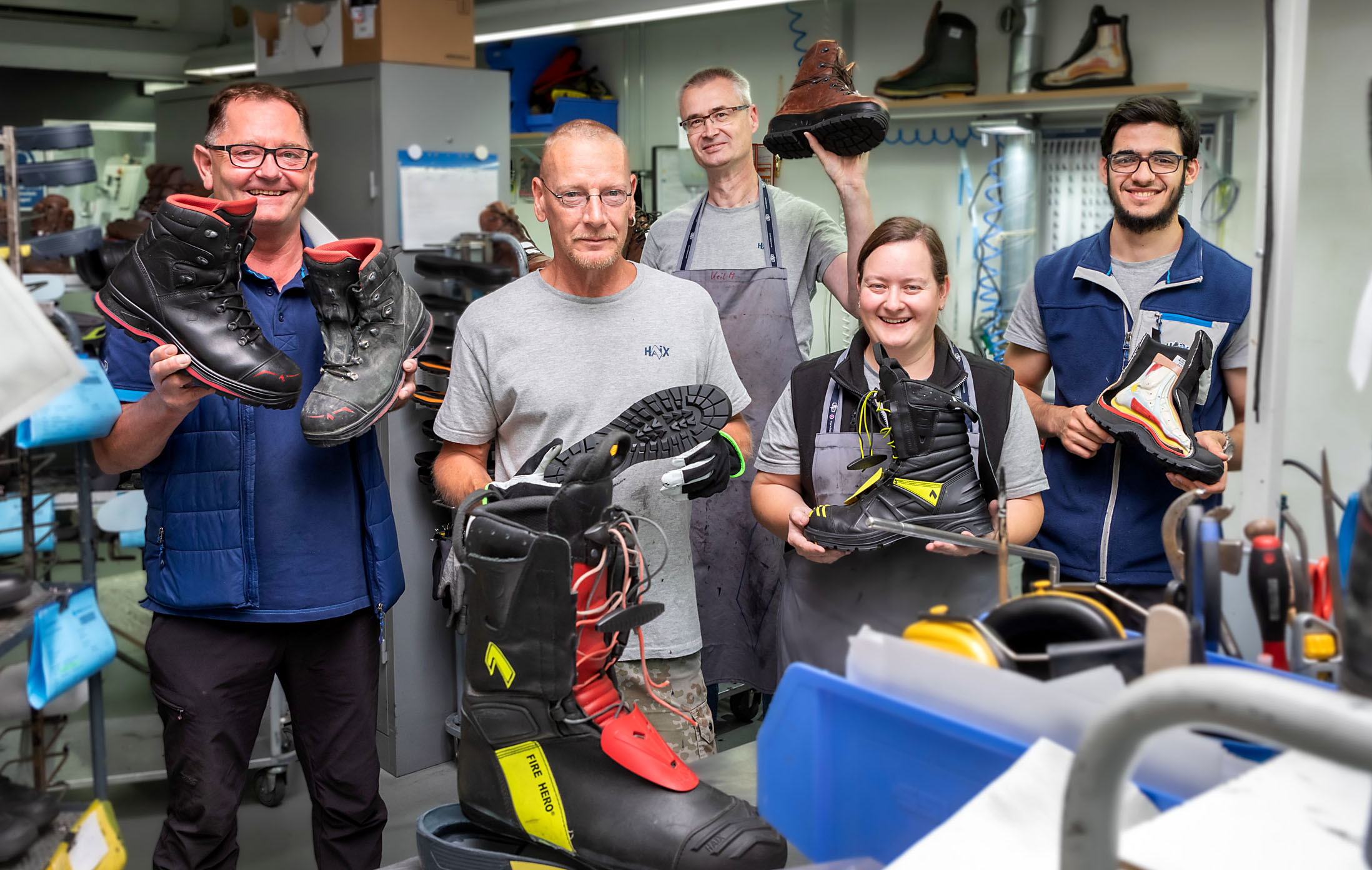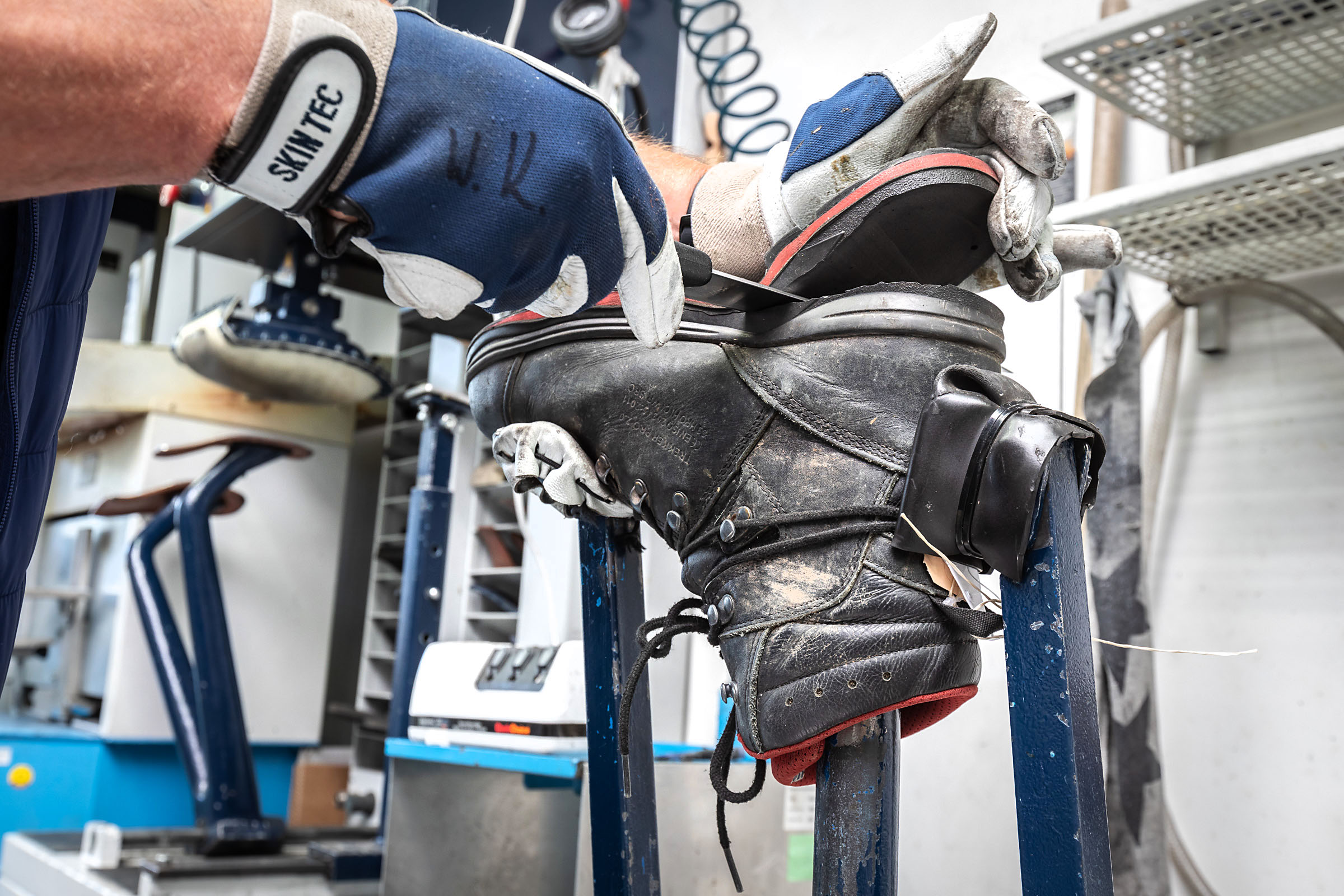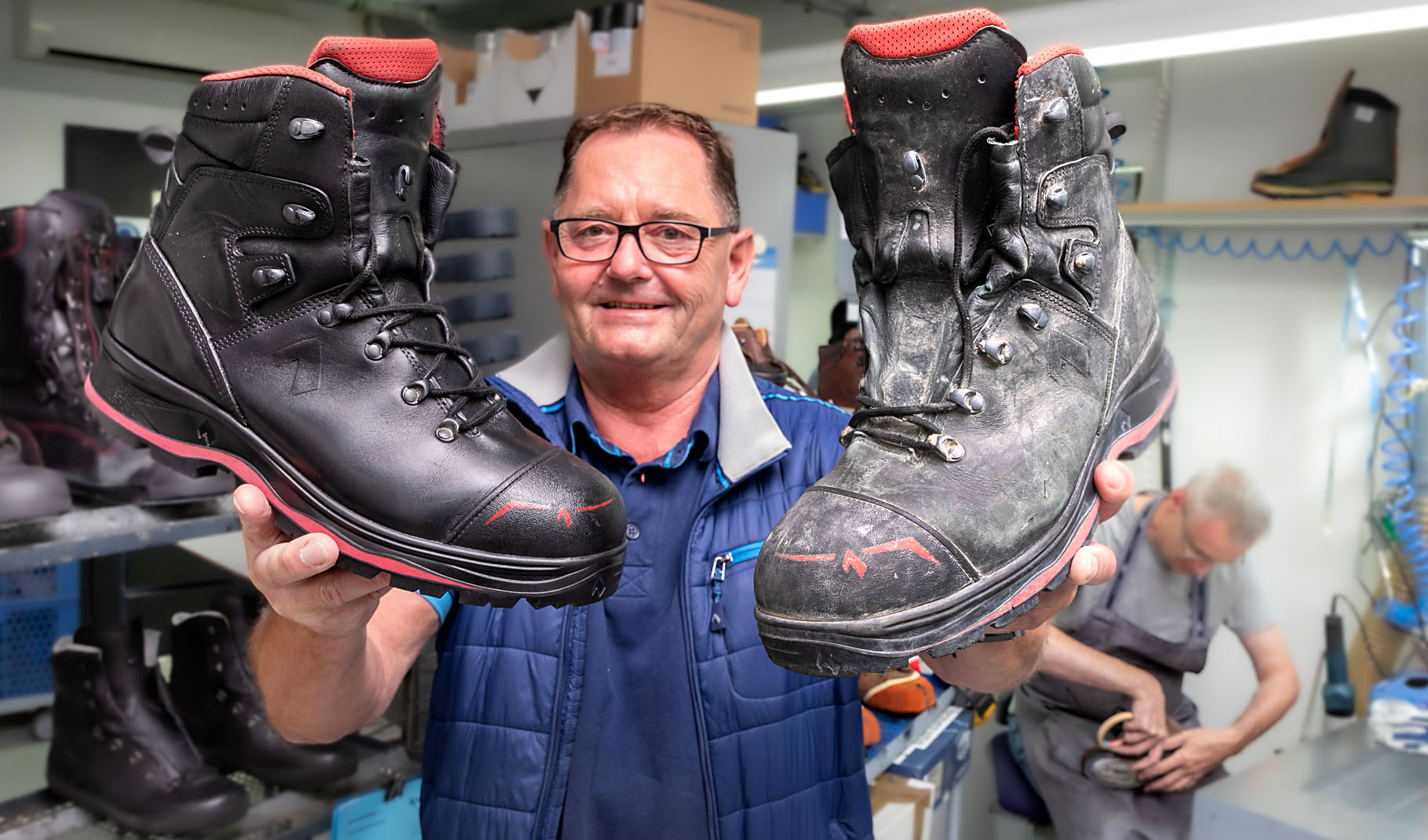“You don’t just get rid of a car because its tires are worn or its wind screen is cracked,” Conny Wagner points out. The same goes for quality shoes. Most of the time, the shoes taken to HAIX for repair only have minor issues – a worn profile, for example. If there’s one thing the Head of the Service Department has learned during her many years with the Bavarian specialist for functional shoes, it’s this: “These things are very easy to repair.” There are not many departments like the one she manages, but it is an important building block in the HAIX corporate philosophy. Sustainability is the order of the day, and MADE IN EUROPE is the way to achieve it. “With our repair service, we extend the life cycle of the products we make here and save on raw materials and energy at the same time,” Wagner explains.




Very few manufacturers invest in such a technical service department for shoes. Of course, this service also makes an excellent selling point: repair or refurbishing can save customers money, even when their shoes have accumulated an impressive mileage.
The HAIX Service Department consists of 16 employees, half of whom work in refurbishing. It is a respectable workshop but quite modest considering the 1.5 million pairs of shoes the company sells every year. “We provide the same kind of customer service you get for a car,” Wagner says. Shoes do not need regular service; they only end up at the “garage” in exceptional cases. But it is good to know whom to ask for help when something is amiss, and it does take a specialist to fix regular wear and tear.
Be it a broken eyelet, a threadbare toe cap, a zip that needs replacing or a worn-out sole, the HAIX Service Department expertly fixes everything that can reasonably be fixed. As Conny Wagner said: you wouldn’t replace your car because the tires are worn. When the bodywork is at the end of its useful life, however, even the best garage won’t be able to help. If, after many years of daily use, the soles are worn, the leather is shabby and cracked, and the shoe is coming apart at the seams, Conny Wagner will readily admit that there’s nothing she can do. If a shoe has spent its entire useful life in wet environments, around steam jets and caustic detergents, and its wearer never once looked after the leather, it may just have been the wrong shoe for the job. The service department doesn’t attempt to fix such cases. “Just like a car,” Conny Wagner repeats. If the underbody or any load-bearing parts are worn to the point of safety issues, it bears considering whether a repair still makes sense.
In any other case, however, well-used shoes are just like any other beloved item: you simply don’t want to get rid of them. We all have our favorite pair of jeans, our favorite shirt and that one pair of shoes that has been with us through the thick and thin of our working life.
On-site service in North America
Good service is important at HAIX North America, too! In Vancouver, HAIX has a highly renowned service partner: TOPY, Quick Cobbler Shoe Repair Experts. Willi Kümpel, the HAIX Service Department’s master cobbler, traveled to British Columbia to impart his extensive HAIX expertise to the local cobblers on location. For example, how to sew up a shoe with a Gore-Tex membrane to keep it reliably waterproof. “There are certain tricks that we got to teach the staff on location,” Kümpel says as he recalls how they had to find new glue right away because the type used at home is not available in Canada. A suitable product that passed, for example, the challenging sand bath test for fire brigade boots was not easy to find. The NFPA1971-2018 standard stipulates that fire brigade boots must be able to withstand a temperature of 260 degrees Celsius for 20 minutes without heating up to more than 44 degrees on the inside. Of course, the glue must be able to put up with the same heat even after a repair. It really does take a specialist.

